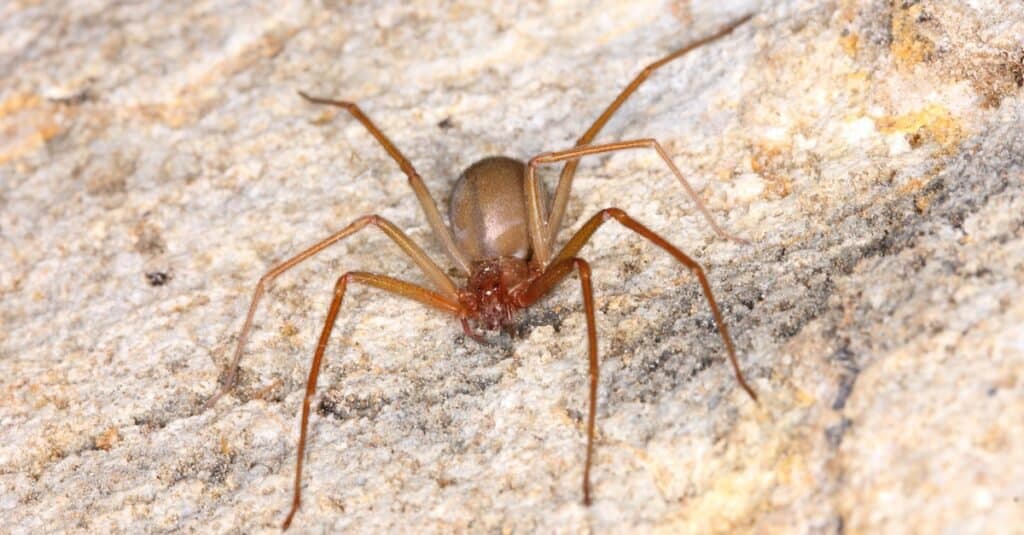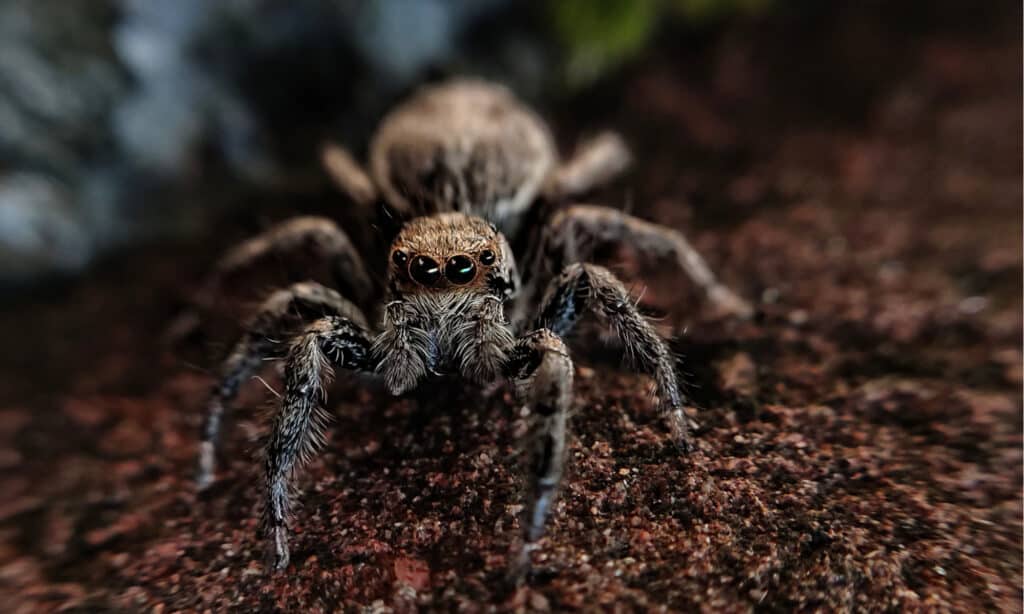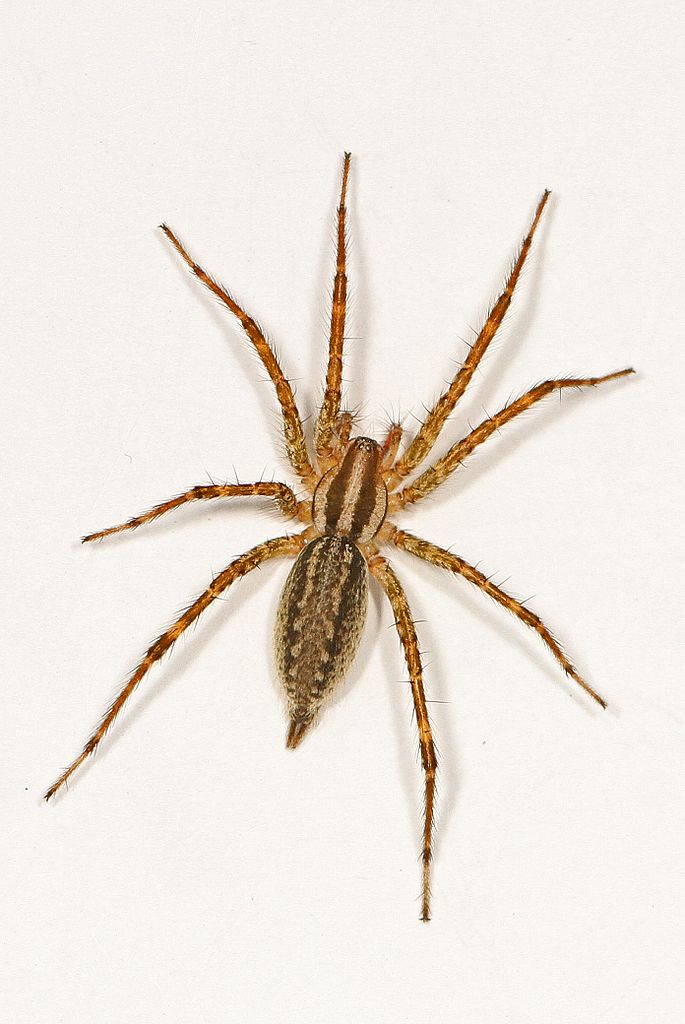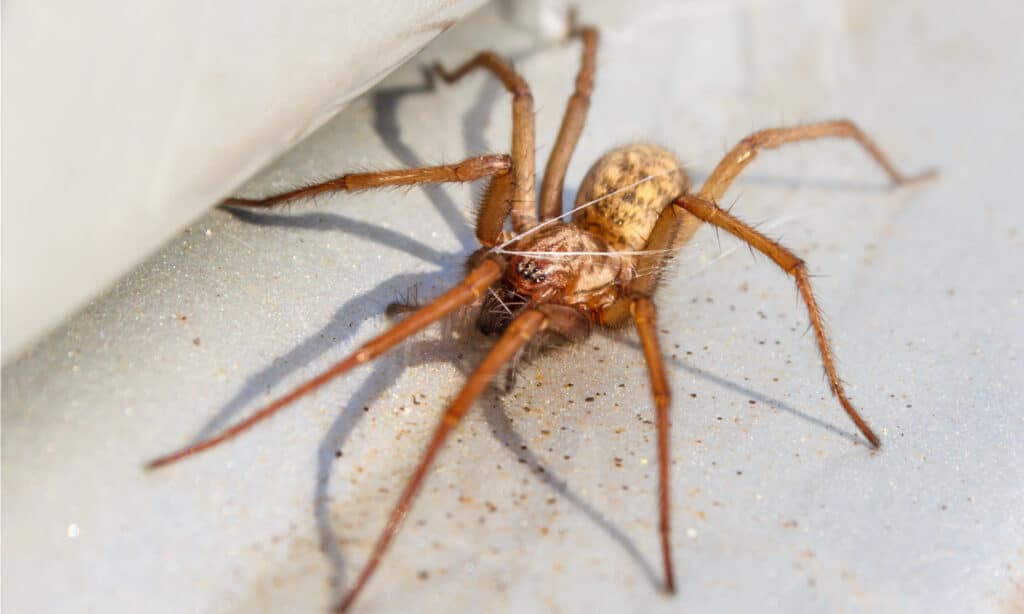We know spiders are not poisonous — spiders are venomous, and Michigan is home to more than 500 native species. However, while many of these species may bite, only a handful of venomous spiders in Michigan pose a serious medical threat.
While spiders can be frightening, they’re an important part of the ecosystem. Even the venomous spiders (actually known as venomous) are important! As a result, learning to recognize the venomous spiders in Michigan, as well as those that are not, is important for learning how to live peacefully alongside our eight-legged counterparts.
Keep reading to learn more about the dangerous and non-venomous spiders of Michigan!
Dangerous Spiders in Michigan
There are two main species of venomous spiders in Michigan: the black widow and the brown recluse. Both of these species pose a significant medical risk, meaning that their venom can be extremely harmful to humans. Learning to identify them can help avoid a painful run-in.
Black Widow

The black widow’s bite releases a neurotoxin called latrotoxin, which can cause extreme pain, muscle rigidity, vomiting, and heavy sweating.
©Jay Ondreicka/Shutterstock.com
Black widow spiders (scientific name Latrodectus) are one of the most dangerous spiders in the world. While dying from a black widow bite is rare, their venom contains a special toxin that is designed to affect the central nervous system. This can result in symptoms like muscle stiffness, difficulty in breathing, weakness, and nausea.
However, despite this scary reputation, black widow spiders are actually pretty docile. They typically live in forests and rural areas. If you encounter them in your territory, it would likely be in dark corners or crevices around wood piles, garages, pools, and window wells. Black widows have been known to hide in shoes, so if you have an insect problem in your home, it may be necessary to check your shoes periodically, especially ones you don’t wear regularly.
They use their venom for catching insects and pests to eat — not humans. This means that they’ll typically only bite if they feel threatened. However, they can be aggressive when defending eggs, which they lay from spring to early summer.
In Michigan, the northern black widow is the type you’d encounter. In general, you can identify a black widow by its dark color (black for females and brown or grey for males) and the tell-tale red hourglass on its abdomen. However, a northern black widow can also have multiple red spots or white stripes on the abdomen.
Brown Recluse

Even though it has extremely dangerous venom, the brown recluse actually has small fangs compared to most spiders.
©Pong Wira/Shutterstock.com
Unlike black widows, brown recluse spiders, also known as violin spiders or by their scientific name, Loxosceles reclusa, will only bite if you startle them or happen to trap them against your skin, such as if you attempt to relocate one with no safety gear. These arachnids are slightly smaller than black widows, and they’re usually less than an inch long.
While brown recluse bites are rarely fatal and there have been no deaths in the United States, they can still be dangerous. In fact, their bites can even cause skin necrosis: a phenomenon that occurs when the skin cells, nerves, and blood vessels die in an area. This can take several days to occur, even if the original bite doesn’t seem serious.
Non-Venomous Michigan Spiders That Seem Dangerous
Michigan has a wide variety of spider species. However, not all are dangerous. Even those that may bite, such as the jumping spider or the American grass spider, aren’t considered medically significant, and they’re more likely to run away than bite when attacked.
However, despite being generally harmless, these Michigan spiders may appear dangerous, whether because of their appearance or because of the way they act.
Jumping Spider

Some people keep jumping spiders as pets due to their cute appearances!
©SwastikEs/Shutterstock.com
One thing’s for sure: a spider that jumps on or at you can be frightening. However, despite the jumping spider’s ability to jump to impressive heights, it is generally harmless.
First, a jumping spider has no interest in humans. These tiny arachnids are more interested in eating flies, mealworms, moths, and even other spiders. As a result, the only time you need to worry about a bite from a jumping spider is if you place it in harm’s way.
These spiders also have difficulty puncturing human skin due to their tiny mouths. This means that their bite may have a pinch, but it won’t cause any lasting damage. However, even if they are able to break the skin and bite you, it’s very rare to have a severe reaction as their venom is not strong enough to affect humans. As a result, when it comes to venomous spiders in Michigan, they pose some of the least concern.
American Grass Spider

The harmless American grass spider is one of the most common spiders in the United States.
©Judy Gallagher, CC BY 2.0 – License
Because of their color, American grass spiders are commonly mistaken for brown recluses. However, these summer spiders are actually in the genus Agelenopsis, and they’re harmless to humans.
Like all spiders, American grass spiders have venom that helps them to capture and eat their prey. However, their fangs are too small to puncture human skin usually, making them a small threat to us. Even if one does puncture the skin, the venom doesn’t have any serious toxins like the black widow or brown recluse that pose a medical emergency.
Black and Yellow Garden Spider

The black and yellow garden spider is a common sight in the gardens and outdoor spaces of America.
©iStock.com/AwakenedEye
If you were taught snake safety growing up, you may have heard the rhyme “black on yellow will kill a fellow.” While this is used to indicate a venomous snake, it doesn’t apply to the black and yellow garden spider, which is actually harmless.
Because they’re large and pose this intimidating color pattern, these spiders frighten many people. However, they’ll only bite if they feel threatened, like if you touch one. Their size and colors make them distinct, as you won’t need to worry about accidentally disturbing one.
The pain from one of these spiders is comparable to a bee sting, with no medical significance.
Hobo Spider

The hobo spider can easily be mistaken for a brown recluse.
©Andrew Balcombe/Shutterstock.com
Hobo spiders are large spiders with a bad reputation for causing skin necrosis with their bites. As a result, it’s common to see one of these large, brown arachnids and worry that it’s one of the venomous spiders in Michigan.
However, scientists have conducted new studies to determine whether or not the hobo spider is as dangerous as once believed by medical professionals. And the answer is no, the hobo spider actually isn’t dangerous. While their bite can puncture the skin and lead to some redness, swelling, or similar symptoms, it doesn’t pose even close to the same medical significance as the black widow or the brown recluse.
How to Avoid Spider Bites
Dangerous or not, the best way to avoid a spider bite is to be aware of these environmentally-helpful invertebrates. Always check your shoes and boots before you put them on, especially if you haven’t worn them for a while or if you store them in a dark, quiet location.
It’s also good to prepare if you know you’re going somewhere spiders might be. Spiders are found in two main areas. First, when indoors, you can find them in dark places like attics or basements. You may also find them in the corners of less frequented rooms. Spiders are also common where there are a lot of insects, like in gardens. Try and cover as much skin as possible by wearing pants and long sleeves, and if you’re going to be working with your hands, wear gloves. Taking precautions is the best way to avoid painful encounters with venomous spiders in Michigan.
Are Wolf Spiders in Michigan Dangerous?

The radiated
wolf spider
(
Hogna radiate), found throughout North America, is just one of the over 2,600 species of wolf spiders.
©YP_Macro/Shutterstock.com
Wolf spiders are another species of arachnid found in Michigan. They are rather large spiders that range in size, from half an inch to two inches and are usually brown to grey in color, with various lines or markings. There are more than 2,600 species and the largest is the Carolina wolf spider. While they look rather intimidating, they are not harmful to humans.
Although they do have venom, unless you are allergic, it is not harmful to humans. As a large spider, their bite may be quite painful, and the symptoms of swelling, itching, and pain around the bite site will go away fairly quickly.
The photo featured at the top of this post is © iStock.com/Kala Stuwe
Thank you for reading! Have some feedback for us? Contact the AZ Animals editorial team.







